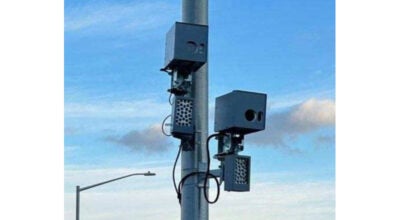Changing course at PDCCC
Published 9:58 am Friday, September 4, 2015
When officials from the Virginia Community College System stepped in and removed Paul Conco as president of Paul D. Camp Community College back in March, one of the primary reasons for doing so, they said, was the poor state of the college’s financial situation. The poor finances, they later revealed, were largely the result of dismal enrollment trends that had failed to improve as they had done at other community colleges around the commonwealth.
In short, under Conco’s leadership, Paul D. Camp — a college that had seen both boom and bust during the long recession — had lost its way. The subtext of state officials’ remarks at the time left little room for comfort about the future of the Western Tidewater institution if the path could not quickly be rediscovered.
Just five months later, under the leadership of Interim President Bill Aiken, things have taken a radical turn at the school’s Franklin, Suffolk and Smithfield campuses. Employees of the college express a sense of camaraderie and an eagerness to share the school’s story, rather than a sense of dread at coming to work and a feeling that their efforts were unappreciated.
Those newly empowered and uplifted employees have taken to email, social media, telephones and even “snail mail” to recruit new students by sharing what they’ve concluded sets Paul D. Camp apart from other its competitors — the personal contact among students, faculty and staff that is afforded by such a small school and the powerful ways that kind of personal contact can make a difference in students’ lives.
The kinds of connections that can be made at a place like Paul D. Camp are a feature of the small-college experience that could yield benefits well beyond the years a particular student might spend on one of the campuses. Those kinds of connections can create alumni who feel so strongly about the school where they earned their associate degrees, nursing pins or workforce certifications that they become donors and event evangelists for the school, instead of faceless names on an alumni spreadsheet.
Even without having yet experienced the long-term benefits of this new approach to acknowledging and proclaiming its strengths, PDCCC has seen great results from the strategy of using all of its staff members to “sell” enrollment slots.
In a recent report by the Virginia Community College’s Office of Institutional Research and Effectiveness, PDCCC showed an 11.5-percent headcount increase this year, which represents 107 more students enrolled than last year this time. The increase in dual enrollment was 187 more students, nearly four times the total last year. And the number of students taking dual enrollment credits could still rise more this year, because public school has not started yet.
Those numbers represent a great turnaround at a college many worried was on its way to closing. The numbers give folks reason to hope the college has turned an important corner. If this growth point can become a trend, PDCCC could once again be widely perceived as an indispensible part of Western Tidewater’s educational landscape.
Clearly Dr. Aiken has made a big difference on campus, especially in his ability to get faculty and staff excited once again about their work and the difference it makes in students’ lives. With their attitudes refreshed and expectations raised, PDCCC employees are now empowered to change the whole course of an institution. It could be an incredible thing to watch.




